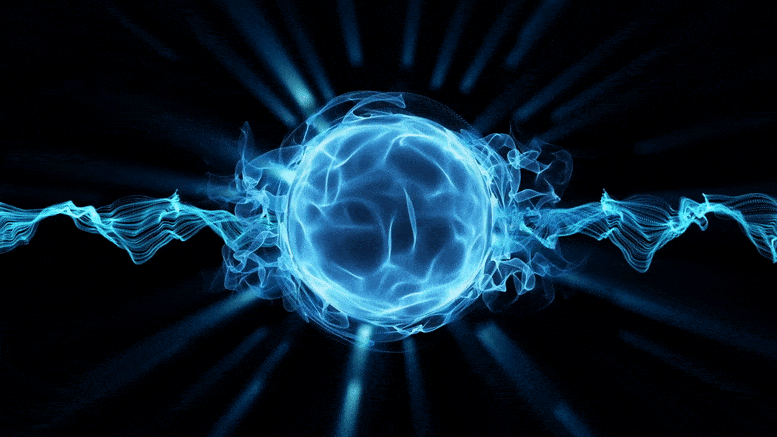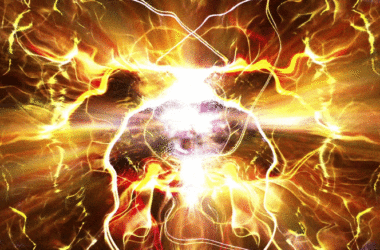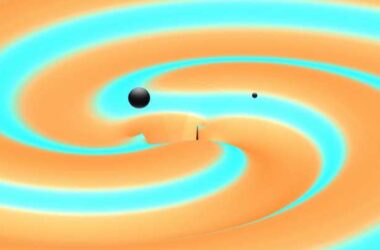
Les chercheurs du laboratoire de physique des plasmas de Princeton du ministère américain de l’énergie (DOE) ont créé un algorithme informatique efficace pour modéliser le mouvement fou des électrons libres lors des expériences visant à exploiter l’énergie de fusion qui alimente le soleil et les étoiles. Cette approche résout une équation difficile, permettant un meilleur contrôle des électrons imprévisibles et rapides dans le combustible pour l’énergie de fusion.
La fusion génère une énergie massive en combinant des éléments légers sous forme de plasma — the hot, charged gas made of free electrons and atomic nuclei, or ions, that makes up 99 percent of the visible universe. Scientists all across the globe are working to reproduce the fusion process in order to create a safe, clean, and plentiful power source for generating electricity.
Solving the equation
A key hurdle for researchers developing fusion on doughnut-shaped devices called tokamaks, which confine the plasma in magnetic fields, has been solving the equation that describes the motion of free-wheeling electrons as they collide and bounce around. Standard methods for simulating this motion, technically called pitch-angle scattering, have proven unsuccessful due to the complexity of the equation.
A successful set of computational rules, or algorithm, would solve the equation while conserving the energy of the speeding particles. “Solving the stochastic differential equation gives the probability of every path the scattered electrons can take,” said Yichen Fu, a graduate student in the Princeton Program in Plasma Physics at PPPL and lead author of a paper in the Journal of Computational Physics that proposes a solution. Such equations yield a pattern that can be analyzed statistically but not determined precisely.

Yichen Fu, center, lead author of the path-setting paper with co-authors Laura Xing Zhang and Hong Qin. Credit: Photos of Fu and Qin by Elle Starkman/Office of Communications; collage by Kiran Sudarsanan.
The accurate solution describes the trajectories of the electrons being scattered. “However, the trajectories are probabilistic and we don’t know exactly where the electrons would go because there are many possible paths,” Fu said. “But by solving the trajectories we can know the probability of electrons choosing every path, and knowing that enables more accurate simulations that can lead to better control of the plasma.”
A major benefit of this knowledge is improved guidance for fusion researchers who pump electric current into tokamak plasmas to create the magnetic field that confines the superhot gas. Another benefit is better understanding of the pitch-angle scattering on energetic runaway electrons that pose danger to the fusion devices.
Rigorous proof
The finding provides a rigorous mathematical proof of the first working algorithm for solving the complex equation. “This gives experimentalists a better theoretical description of what’s going on to help them design their experiments,” said Hong Qin, a principal research physicist, advisor to Fu and a coauthor of the paper. “Previously, there was no working algorithm for this equation, and physicists got around this difficulty by changing the equation.”
The reported study represents the research activity in algorithms and applied math of the recently launched Computational Sciences Department (CSD) at PPPL and expands an earlier paper coauthored by Fu, Qin and graduate student Laura Xin Zhang, a coauthor of this paper. While that work created a novel energy-conserving algorithm for tracking fast particles, the method did not incorporate magnetic fields and the mathematical accuracy was not rigorously proven.
The CSD, founded this year as part of the Lab’s expansion into a multi-purpose research center, supports the critical fusion energy sciences mission of PPPL and serves as the home for computationally intensive discoveries. “This technical advance displays the role of the CSD,” Qin said. “One of its goals is to develop algorithms that lead to improved fusion simulations.”
Reference: “An explicitly solvable energy-conserving algorithm for pitch-angle scattering in magnetized plasmas” by Yichen Fu, Xin Zhang and Hong Qin, 8 October 2021, Journal of Computational Physics.
DOI: 10.1016/j.jcp.2021.110767
Support for this work comes from the DOE Office of Science.
PPPL, on Princeton University’s Forrestal Campus in Plainsboro, N.J., is devoted to creating new knowledge about the physics of plasmas — ultra-hot, charged gases — and to developing practical solutions for the creation of fusion energy.


